NIO基础 - 网络编程
non-blocking io 非阻塞 IO
1. 三大组件
1.1 Channel & Buffer
channel 有一点类似于 stream,它就是读写数据的双向通道,可以从 channel 将数据读入 buffer,也可以将 buffer 的数据写入 channel,而之前的 stream 要么是输入,要么是输出,channel 比 stream 更为底层
常见的 Channel 有
- FileChannel
- DatagramChannel
- SocketChannel
- ServerSocketChannel
buffer 则用来缓冲读写数据,常见的 buffer 有
- ByteBuffer
- MappedByteBuffer
- DirectByteBuffer
- HeapByteBuffer
- ShortBuffer
- IntBuffer
- LongBuffer
- FloatBuffer
- DoubleBuffer
- CharBuffer
1.2 Selector
selector 单从字面意思不好理解,需要结合服务器的设计演化来理解它的用途
多线程版设计
⚠️ 多线程版缺点
- 内存占用高
- 线程上下文切换成本高
- 只适合连接数少的场景
线程池版设计
⚠️ 线程池版缺点
- 阻塞模式下,线程仅能处理一个 socket 连接
- 仅适合短连接场景
selector 版设计
selector 的作用就是配合一个线程来管理多个 channel,获取这些 channel 上发生的事件,这些 channel 工作在非阻塞模式下,不会让线程吊死在一个 channel 上。适合连接数特别多,但流量低的场景(low traffic)
调用 selector 的 select() 会阻塞直到 channel 发生了读写就绪事件,这些事件发生,select 方法就会返回这些事件交给 thread 来处理
2. ByteBuffer
有一普通文本文件 data.txt,内容为
1234567890abcd
使用 FileChannel 来读取文件内容
@Slf4j
public class ChannelDemo1 {public static void main(String[] args) {try (RandomAccessFile file = new RandomAccessFile("helloword/data.txt", "rw")) {FileChannel channel = file.getChannel();ByteBuffer buffer = ByteBuffer.allocate(10);do {// 向 buffer 写入int len = channel.read(buffer);log.debug("读到字节数:{}", len);if (len == -1) {break;}// 切换 buffer 读模式buffer.flip();while(buffer.hasRemaining()) {log.debug("{}", (char)buffer.get());}// 切换 buffer 写模式buffer.clear();} while (true);} catch (IOException e) {e.printStackTrace();}}
}
输出
10:39:03 [DEBUG] [main] c.i.n.ChannelDemo1 - 读到字节数:10
10:39:03 [DEBUG] [main] c.i.n.ChannelDemo1 - 1
10:39:03 [DEBUG] [main] c.i.n.ChannelDemo1 - 2
10:39:03 [DEBUG] [main] c.i.n.ChannelDemo1 - 3
10:39:03 [DEBUG] [main] c.i.n.ChannelDemo1 - 4
10:39:03 [DEBUG] [main] c.i.n.ChannelDemo1 - 5
10:39:03 [DEBUG] [main] c.i.n.ChannelDemo1 - 6
10:39:03 [DEBUG] [main] c.i.n.ChannelDemo1 - 7
10:39:03 [DEBUG] [main] c.i.n.ChannelDemo1 - 8
10:39:03 [DEBUG] [main] c.i.n.ChannelDemo1 - 9
10:39:03 [DEBUG] [main] c.i.n.ChannelDemo1 - 0
10:39:03 [DEBUG] [main] c.i.n.ChannelDemo1 - 读到字节数:4
10:39:03 [DEBUG] [main] c.i.n.ChannelDemo1 - a
10:39:03 [DEBUG] [main] c.i.n.ChannelDemo1 - b
10:39:03 [DEBUG] [main] c.i.n.ChannelDemo1 - c
10:39:03 [DEBUG] [main] c.i.n.ChannelDemo1 - d
10:39:03 [DEBUG] [main] c.i.n.ChannelDemo1 - 读到字节数:-1
2.1 ByteBuffer 正确使用姿势
- 向 buffer 写入数据,例如调用 channel.read(buffer)
- 调用 flip() 切换至读模式
- 从 buffer 读取数据,例如调用 buffer.get()
- 调用 clear() 或 compact() 切换至写模式
- 重复 1~4 步骤
2.2 ByteBuffer 结构
ByteBuffer 有以下重要属性
- capacity
- position
- limit
一开始
![[外链图片转存失败,源站可能有防盗链机制,建议将图片保存下来直接上传(img-CtGOamkV-1682329098966)(img/0021.png)]](https://img-blog.csdnimg.cn/5509297eba5e479d92dcfcd2b0dc531b.png)
写模式下,position 是写入位置,limit 等于容量,下图表示写入了 4 个字节后的状态
![[外链图片转存失败,源站可能有防盗链机制,建议将图片保存下来直接上传(img-F0LEm2wS-1682329098967)(img/0018.png)]](https://img-blog.csdnimg.cn/5a27730f41ec4f02a9d809bc08f69d0c.png)
flip 动作发生后,position 切换为读取位置,limit 切换为读取限制
![[外链图片转存失败,源站可能有防盗链机制,建议将图片保存下来直接上传(img-U1caGxaJ-1682329098968)(img/0019.png)]](https://img-blog.csdnimg.cn/30d5c6fb1f28428f9b28697151a3b768.png)
读取 4 个字节后,状态
![[外链图片转存失败,源站可能有防盗链机制,建议将图片保存下来直接上传(img-PvK42U1q-1682329098968)(img/0020.png)]](https://img-blog.csdnimg.cn/8402e9457f144a369e2fe02b2cddb086.png)
clear 动作发生后,状态
![[外链图片转存失败,源站可能有防盗链机制,建议将图片保存下来直接上传(img-JwdVWphL-1682329098969)(img/0021.png)]](https://img-blog.csdnimg.cn/82d205508cfb481cb67607993977c0fa.png)
compact 方法,是把未读完的部分向前压缩,然后切换至写模式
![[外链图片转存失败,源站可能有防盗链机制,建议将图片保存下来直接上传(img-vKypVIkT-1682329098969)(img/0022.png)]](https://img-blog.csdnimg.cn/ee2451fc00174ebd93edcefff3cf5179.png)
💡 调试工具类
public class ByteBufferUtil {private static final char[] BYTE2CHAR = new char[256];private static final char[] HEXDUMP_TABLE = new char[256 * 4];private static final String[] HEXPADDING = new String[16];private static final String[] HEXDUMP_ROWPREFIXES = new String[65536 >>> 4];private static final String[] BYTE2HEX = new String[256];private static final String[] BYTEPADDING = new String[16];static {final char[] DIGITS = "0123456789abcdef".toCharArray();for (int i = 0; i < 256; i++) {HEXDUMP_TABLE[i << 1] = DIGITS[i >>> 4 & 0x0F];HEXDUMP_TABLE[(i << 1) + 1] = DIGITS[i & 0x0F];}int i;// Generate the lookup table for hex dump paddingsfor (i = 0; i < HEXPADDING.length; i++) {int padding = HEXPADDING.length - i;StringBuilder buf = new StringBuilder(padding * 3);for (int j = 0; j < padding; j++) {buf.append(" ");}HEXPADDING[i] = buf.toString();}// Generate the lookup table for the start-offset header in each row (up to 64KiB).for (i = 0; i < HEXDUMP_ROWPREFIXES.length; i++) {StringBuilder buf = new StringBuilder(12);buf.append(NEWLINE);buf.append(Long.toHexString(i << 4 & 0xFFFFFFFFL | 0x100000000L));buf.setCharAt(buf.length() - 9, '|');buf.append('|');HEXDUMP_ROWPREFIXES[i] = buf.toString();}// Generate the lookup table for byte-to-hex-dump conversionfor (i = 0; i < BYTE2HEX.length; i++) {BYTE2HEX[i] = ' ' + StringUtil.byteToHexStringPadded(i);}// Generate the lookup table for byte dump paddingsfor (i = 0; i < BYTEPADDING.length; i++) {int padding = BYTEPADDING.length - i;StringBuilder buf = new StringBuilder(padding);for (int j = 0; j < padding; j++) {buf.append(' ');}BYTEPADDING[i] = buf.toString();}// Generate the lookup table for byte-to-char conversionfor (i = 0; i < BYTE2CHAR.length; i++) {if (i <= 0x1f || i >= 0x7f) {BYTE2CHAR[i] = '.';} else {BYTE2CHAR[i] = (char) i;}}}/*** 打印所有内容* @param buffer*/public static void debugAll(ByteBuffer buffer) {int oldlimit = buffer.limit();buffer.limit(buffer.capacity());StringBuilder origin = new StringBuilder(256);appendPrettyHexDump(origin, buffer, 0, buffer.capacity());System.out.println("+--------+-------------------- all ------------------------+----------------+");System.out.printf("position: [%d], limit: [%d]\n", buffer.position(), oldlimit);System.out.println(origin);buffer.limit(oldlimit);}/*** 打印可读取内容* @param buffer*/public static void debugRead(ByteBuffer buffer) {StringBuilder builder = new StringBuilder(256);appendPrettyHexDump(builder, buffer, buffer.position(), buffer.limit() - buffer.position());System.out.println("+--------+-------------------- read -----------------------+----------------+");System.out.printf("position: [%d], limit: [%d]\n", buffer.position(), buffer.limit());System.out.println(builder);}private static void appendPrettyHexDump(StringBuilder dump, ByteBuffer buf, int offset, int length) {if (isOutOfBounds(offset, length, buf.capacity())) {throw new IndexOutOfBoundsException("expected: " + "0 <= offset(" + offset + ") <= offset + length(" + length+ ") <= " + "buf.capacity(" + buf.capacity() + ')');}if (length == 0) {return;}dump.append(" +-------------------------------------------------+" +NEWLINE + " | 0 1 2 3 4 5 6 7 8 9 a b c d e f |" +NEWLINE + "+--------+-------------------------------------------------+----------------+");final int startIndex = offset;final int fullRows = length >>> 4;final int remainder = length & 0xF;// Dump the rows which have 16 bytes.for (int row = 0; row < fullRows; row++) {int rowStartIndex = (row << 4) + startIndex;// Per-row prefix.appendHexDumpRowPrefix(dump, row, rowStartIndex);// Hex dumpint rowEndIndex = rowStartIndex + 16;for (int j = rowStartIndex; j < rowEndIndex; j++) {dump.append(BYTE2HEX[getUnsignedByte(buf, j)]);}dump.append(" |");// ASCII dumpfor (int j = rowStartIndex; j < rowEndIndex; j++) {dump.append(BYTE2CHAR[getUnsignedByte(buf, j)]);}dump.append('|');}// Dump the last row which has less than 16 bytes.if (remainder != 0) {int rowStartIndex = (fullRows << 4) + startIndex;appendHexDumpRowPrefix(dump, fullRows, rowStartIndex);// Hex dumpint rowEndIndex = rowStartIndex + remainder;for (int j = rowStartIndex; j < rowEndIndex; j++) {dump.append(BYTE2HEX[getUnsignedByte(buf, j)]);}dump.append(HEXPADDING[remainder]);dump.append(" |");// Ascii dumpfor (int j = rowStartIndex; j < rowEndIndex; j++) {dump.append(BYTE2CHAR[getUnsignedByte(buf, j)]);}dump.append(BYTEPADDING[remainder]);dump.append('|');}dump.append(NEWLINE +"+--------+-------------------------------------------------+----------------+");}private static void appendHexDumpRowPrefix(StringBuilder dump, int row, int rowStartIndex) {if (row < HEXDUMP_ROWPREFIXES.length) {dump.append(HEXDUMP_ROWPREFIXES[row]);} else {dump.append(NEWLINE);dump.append(Long.toHexString(rowStartIndex & 0xFFFFFFFFL | 0x100000000L));dump.setCharAt(dump.length() - 9, '|');dump.append('|');}}public static short getUnsignedByte(ByteBuffer buffer, int index) {return (short) (buffer.get(index) & 0xFF);}
}
2.3 ByteBuffer 常见方法
分配空间
可以使用 allocate 方法为 ByteBuffer 分配空间,其它 buffer 类也有该方法
Bytebuffer buf = ByteBuffer.allocate(16);
向 buffer 写入数据
有两种办法
- 调用 channel 的 read 方法
- 调用 buffer 自己的 put 方法
int readBytes = channel.read(buf);
和
buf.put((byte)127);
从 buffer 读取数据
同样有两种办法
- 调用 channel 的 write 方法
- 调用 buffer 自己的 get 方法
int writeBytes = channel.write(buf);
和
byte b = buf.get();
get 方法会让 position 读指针向后走,如果想重复读取数据
- 可以调用 rewind 方法将 position 重新置为 0
- 或者调用 get(int i) 方法获取索引 i 的内容,它不会移动读指针
mark 和 reset
mark 是在读取时,做一个标记,即使 position 改变,只要调用 reset 就能回到 mark 的位置
注意
rewind 和 flip 都会清除 mark 位置
字符串与 ByteBuffer 互转
ByteBuffer buffer1 = StandardCharsets.UTF_8.encode("你好");
ByteBuffer buffer2 = Charset.forName("utf-8").encode("你好");debug(buffer1);
debug(buffer2);CharBuffer buffer3 = StandardCharsets.UTF_8.decode(buffer1);
System.out.println(buffer3.getClass());
System.out.println(buffer3.toString());输出
+-------------------------------------------------+| 0 1 2 3 4 5 6 7 8 9 a b c d e f |
+--------+-------------------------------------------------+----------------+
|00000000| e4 bd a0 e5 a5 bd |...... |
+--------+-------------------------------------------------+----------------++-------------------------------------------------+| 0 1 2 3 4 5 6 7 8 9 a b c d e f |
+--------+-------------------------------------------------+----------------+
|00000000| e4 bd a0 e5 a5 bd |...... |
+--------+-------------------------------------------------+----------------+
class java.nio.HeapCharBuffer
你好⚠️ Buffer 的线程安全
Buffer 是非线程安全的
2.4 Scattering Reads
分散读取,有一个文本文件 3parts.txt
onetwothree使用如下方式读取,可以将数据填充至多个 buffer
try (RandomAccessFile file = new RandomAccessFile("helloword/3parts.txt", "rw")) {FileChannel channel = file.getChannel();ByteBuffer a = ByteBuffer.allocate(3);ByteBuffer b = ByteBuffer.allocate(3);ByteBuffer c = ByteBuffer.allocate(5);channel.read(new ByteBuffer[]{a, b, c});a.flip();b.flip();c.flip();debug(a);debug(b);debug(c);
} catch (IOException e) {e.printStackTrace();
}结果
+-------------------------------------------------+| 0 1 2 3 4 5 6 7 8 9 a b c d e f |
+--------+-------------------------------------------------+----------------+
|00000000| 6f 6e 65 |one |
+--------+-------------------------------------------------+----------------++-------------------------------------------------+| 0 1 2 3 4 5 6 7 8 9 a b c d e f |
+--------+-------------------------------------------------+----------------+
|00000000| 74 77 6f |two |
+--------+-------------------------------------------------+----------------++-------------------------------------------------+| 0 1 2 3 4 5 6 7 8 9 a b c d e f |
+--------+-------------------------------------------------+----------------+
|00000000| 74 68 72 65 65 |three |
+--------+-------------------------------------------------+----------------+2.5 Gathering Writes
使用如下方式写入,可以将多个 buffer 的数据填充至 channel
try (RandomAccessFile file = new RandomAccessFile("helloword/3parts.txt", "rw")) {FileChannel channel = file.getChannel();ByteBuffer d = ByteBuffer.allocate(4);ByteBuffer e = ByteBuffer.allocate(4);channel.position(11);d.put(new byte[]{'f', 'o', 'u', 'r'});e.put(new byte[]{'f', 'i', 'v', 'e'});d.flip();e.flip();debug(d);debug(e);channel.write(new ByteBuffer[]{d, e});
} catch (IOException e) {e.printStackTrace();
}输出
+-------------------------------------------------+| 0 1 2 3 4 5 6 7 8 9 a b c d e f |
+--------+-------------------------------------------------+----------------+
|00000000| 66 6f 75 72 |four |
+--------+-------------------------------------------------+----------------++-------------------------------------------------+| 0 1 2 3 4 5 6 7 8 9 a b c d e f |
+--------+-------------------------------------------------+----------------+
|00000000| 66 69 76 65 |five |
+--------+-------------------------------------------------+----------------+
文件内容
onetwothreefourfive
2.6 练习
网络上有多条数据发送给服务端,数据之间使用 \n 进行分隔
但由于某种原因这些数据在接收时,被进行了重新组合,例如原始数据有3条为
- Hello,world\n
- I’m zhangsan\n
- How are you?\n
变成了下面的两个 byteBuffer (黏包,半包)
- Hello,world\nI’m zhangsan\nHo
- w are you?\n
现在要求你编写程序,将错乱的数据恢复成原始的按 \n 分隔的数据
public static void main(String[] args) {ByteBuffer source = ByteBuffer.allocate(32);// 11 24source.put("Hello,world\nI'm zhangsan\nHo".getBytes());split(source);source.put("w are you?\nhaha!\n".getBytes());split(source);
}private static void split(ByteBuffer source) {source.flip();int oldLimit = source.limit();for (int i = 0; i < oldLimit; i++) {if (source.get(i) == '\n') {System.out.println(i);ByteBuffer target = ByteBuffer.allocate(i + 1 - source.position());// 0 ~ limitsource.limit(i + 1);target.put(source); // 从source 读,向 target 写debugAll(target);source.limit(oldLimit);}}source.compact();
}
3. 文件编程
3.1 FileChannel
⚠️ FileChannel 工作模式
FileChannel 只能工作在阻塞模式下
获取
不能直接打开 FileChannel,必须通过 FileInputStream、FileOutputStream 或者 RandomAccessFile 来获取 FileChannel,它们都有 getChannel 方法
- 通过 FileInputStream 获取的 channel 只能读
- 通过 FileOutputStream 获取的 channel 只能写
- 通过 RandomAccessFile 是否能读写根据构造 RandomAccessFile 时的读写模式决定
读取
会从 channel 读取数据填充 ByteBuffer,返回值表示读到了多少字节,-1 表示到达了文件的末尾
int readBytes = channel.read(buffer);
写入
写入的正确姿势如下, SocketChannel
ByteBuffer buffer = ...;
buffer.put(...); // 存入数据
buffer.flip(); // 切换读模式while(buffer.hasRemaining()) {channel.write(buffer);
}
在 while 中调用 channel.write 是因为 write 方法并不能保证一次将 buffer 中的内容全部写入 channel
关闭
channel 必须关闭,不过调用了 FileInputStream、FileOutputStream 或者 RandomAccessFile 的 close 方法会间接地调用 channel 的 close 方法
位置
获取当前位置
long pos = channel.position();
设置当前位置
long newPos = ...;
channel.position(newPos);设置当前位置时,如果设置为文件的末尾
- 这时读取会返回 -1
- 这时写入,会追加内容,但要注意如果 position 超过了文件末尾,再写入时在新内容和原末尾之间会有空洞(00)
大小
使用 size 方法获取文件的大小
强制写入
操作系统出于性能的考虑,会将数据缓存,不是立刻写入磁盘。可以调用 force(true) 方法将文件内容和元数据(文件的权限等信息)立刻写入磁盘
3.2 两个 Channel 传输数据
String FROM = "helloword/data.txt";
String TO = "helloword/to.txt";
long start = System.nanoTime();
try (FileChannel from = new FileInputStream(FROM).getChannel();FileChannel to = new FileOutputStream(TO).getChannel();) {from.transferTo(0, from.size(), to);
} catch (IOException e) {e.printStackTrace();
}
long end = System.nanoTime();
System.out.println("transferTo 用时:" + (end - start) / 1000_000.0);输出
transferTo 用时:8.2011超过 2g 大小的文件传输
public class TestFileChannelTransferTo {public static void main(String[] args) {try (FileChannel from = new FileInputStream("data.txt").getChannel();FileChannel to = new FileOutputStream("to.txt").getChannel();) {// 效率高,底层会利用操作系统的零拷贝进行优化long size = from.size();// left 变量代表还剩余多少字节for (long left = size; left > 0; ) {System.out.println("position:" + (size - left) + " left:" + left);left -= from.transferTo((size - left), left, to);}} catch (IOException e) {e.printStackTrace();}}
}实际传输一个超大文件
position:0 left:7769948160
position:2147483647 left:5622464513
position:4294967294 left:3474980866
position:6442450941 left:13274972193.3 Path
jdk7 引入了 Path 和 Paths 类
- Path 用来表示文件路径
- Paths 是工具类,用来获取 Path 实例
Path source = Paths.get("1.txt"); // 相对路径 使用 user.dir 环境变量来定位 1.txtPath source = Paths.get("d:\\1.txt"); // 绝对路径 代表了 d:\1.txtPath source = Paths.get("d:/1.txt"); // 绝对路径 同样代表了 d:\1.txtPath projects = Paths.get("d:\\data", "projects"); // 代表了 d:\data\projects.代表了当前路径..代表了上一级路径
例如目录结构如下
d:|- data|- projects|- a|- b代码
Path path = Paths.get("d:\\data\\projects\\a\\..\\b");
System.out.println(path);
System.out.println(path.normalize()); // 正常化路径会输出
d:\data\projects\a\..\b
d:\data\projects\b3.4 Files
检查文件是否存在
Path path = Paths.get("helloword/data.txt");
System.out.println(Files.exists(path));创建一级目录
Path path = Paths.get("helloword/d1");
Files.createDirectory(path);- 如果目录已存在,会抛异常 FileAlreadyExistsException
- 不能一次创建多级目录,否则会抛异常 NoSuchFileException
创建多级目录用
Path path = Paths.get("helloword/d1/d2");
Files.createDirectories(path);
拷贝文件
Path source = Paths.get("helloword/data.txt");
Path target = Paths.get("helloword/target.txt");Files.copy(source, target);
- 如果文件已存在,会抛异常 FileAlreadyExistsException
如果希望用 source 覆盖掉 target,需要用 StandardCopyOption 来控制
Files.copy(source, target, StandardCopyOption.REPLACE_EXISTING);
移动文件
Path source = Paths.get("helloword/data.txt");
Path target = Paths.get("helloword/data.txt");Files.move(source, target, StandardCopyOption.ATOMIC_MOVE);
- StandardCopyOption.ATOMIC_MOVE 保证文件移动的原子性
删除文件
Path target = Paths.get("helloword/target.txt");Files.delete(target);- 如果文件不存在,会抛异常 NoSuchFileException
删除目录
Path target = Paths.get("helloword/d1");Files.delete(target);- 如果目录还有内容,会抛异常 DirectoryNotEmptyException
遍历目录文件
public static void main(String[] args) throws IOException {Path path = Paths.get("C:\\Program Files\\Java\\jdk1.8.0_91");AtomicInteger dirCount = new AtomicInteger();AtomicInteger fileCount = new AtomicInteger();Files.walkFileTree(path, new SimpleFileVisitor<Path>(){@Overridepublic FileVisitResult preVisitDirectory(Path dir, BasicFileAttributes attrs) throws IOException {System.out.println(dir);dirCount.incrementAndGet();return super.preVisitDirectory(dir, attrs);}@Overridepublic FileVisitResult visitFile(Path file, BasicFileAttributes attrs) throws IOException {System.out.println(file);fileCount.incrementAndGet();return super.visitFile(file, attrs);}});System.out.println(dirCount); // 133System.out.println(fileCount); // 1479
}统计 jar 的数目
Path path = Paths.get("C:\\Program Files\\Java\\jdk1.8.0_91");
AtomicInteger fileCount = new AtomicInteger();
Files.walkFileTree(path, new SimpleFileVisitor<Path>(){@Overridepublic FileVisitResult visitFile(Path file, BasicFileAttributes attrs) throws IOException {if (file.toFile().getName().endsWith(".jar")) {fileCount.incrementAndGet();}return super.visitFile(file, attrs);}
});
System.out.println(fileCount); // 724删除多级目录
Path path = Paths.get("d:\\a");
Files.walkFileTree(path, new SimpleFileVisitor<Path>(){@Overridepublic FileVisitResult visitFile(Path file, BasicFileAttributes attrs) throws IOException {Files.delete(file);return super.visitFile(file, attrs);}@Overridepublic FileVisitResult postVisitDirectory(Path dir, IOException exc) throws IOException {Files.delete(dir);return super.postVisitDirectory(dir, exc);}
});
⚠️ 删除很危险
删除是危险操作,确保要递归删除的文件夹没有重要内容
拷贝多级目录
long start = System.currentTimeMillis();
String source = "D:\\Snipaste-1.16.2-x64";
String target = "D:\\Snipaste-1.16.2-x64aaa";Files.walk(Paths.get(source)).forEach(path -> {try {String targetName = path.toString().replace(source, target);// 是目录if (Files.isDirectory(path)) {Files.createDirectory(Paths.get(targetName));}// 是普通文件else if (Files.isRegularFile(path)) {Files.copy(path, Paths.get(targetName));}} catch (IOException e) {e.printStackTrace();}
});
long end = System.currentTimeMillis();
System.out.println(end - start);
4. 网络编程
4.1 非阻塞 vs 阻塞
阻塞
- 阻塞模式下,相关方法都会导致线程暂停
- ServerSocketChannel.accept 会在没有连接建立时让线程暂停
- SocketChannel.read 会在没有数据可读时让线程暂停
- 阻塞的表现其实就是线程暂停了,暂停期间不会占用 cpu,但线程相当于闲置
- 单线程下,阻塞方法之间相互影响,几乎不能正常工作,需要多线程支持
- 但多线程下,有新的问题,体现在以下方面
- 32 位 jvm 一个线程 320k,64 位 jvm 一个线程 1024k,如果连接数过多,必然导致 OOM,并且线程太多,反而会因为频繁上下文切换导致性能降低
- 可以采用线程池技术来减少线程数和线程上下文切换,但治标不治本,如果有很多连接建立,但长时间 inactive,会阻塞线程池中所有线程,因此不适合长连接,只适合短连接
服务器端
// 使用 nio 来理解阻塞模式, 单线程
// 0. ByteBuffer
ByteBuffer buffer = ByteBuffer.allocate(16);
// 1. 创建了服务器
ServerSocketChannel ssc = ServerSocketChannel.open();// 2. 绑定监听端口
ssc.bind(new InetSocketAddress(8080));// 3. 连接集合
List<SocketChannel> channels = new ArrayList<>();
while (true) {// 4. accept 建立与客户端连接, SocketChannel 用来与客户端之间通信log.debug("connecting...");SocketChannel sc = ssc.accept(); // 阻塞方法,线程停止运行log.debug("connected... {}", sc);channels.add(sc);for (SocketChannel channel : channels) {// 5. 接收客户端发送的数据log.debug("before read... {}", channel);channel.read(buffer); // 阻塞方法,线程停止运行buffer.flip();debugRead(buffer);buffer.clear();log.debug("after read...{}", channel);}
}
客户端
SocketChannel sc = SocketChannel.open();
sc.connect(new InetSocketAddress("localhost", 8080));
System.out.println("waiting...");
非阻塞
- 非阻塞模式下,相关方法都会不会让线程暂停
- 在 ServerSocketChannel.accept 在没有连接建立时,会返回 null,继续运行
- SocketChannel.read 在没有数据可读时,会返回 0,但线程不必阻塞,可以去执行其它 SocketChannel 的 read 或是去执行 ServerSocketChannel.accept
- 写数据时,线程只是等待数据写入 Channel 即可,无需等 Channel 通过网络把数据发送出去
- 但非阻塞模式下,即使没有连接建立,和可读数据,线程仍然在不断运行,白白浪费了 cpu
- 数据复制过程中,线程实际还是阻塞的(AIO 改进的地方)
服务器端,客户端代码不变
// 使用 nio 来理解非阻塞模式, 单线程
// 0. ByteBuffer
ByteBuffer buffer = ByteBuffer.allocate(16);
// 1. 创建了服务器
ServerSocketChannel ssc = ServerSocketChannel.open();
ssc.configureBlocking(false); // 非阻塞模式
// 2. 绑定监听端口
ssc.bind(new InetSocketAddress(8080));
// 3. 连接集合
List<SocketChannel> channels = new ArrayList<>();
while (true) {// 4. accept 建立与客户端连接, SocketChannel 用来与客户端之间通信SocketChannel sc = ssc.accept(); // 非阻塞,线程还会继续运行,如果没有连接建立,但sc是nullif (sc != null) {log.debug("connected... {}", sc);sc.configureBlocking(false); // 非阻塞模式channels.add(sc);}for (SocketChannel channel : channels) {// 5. 接收客户端发送的数据int read = channel.read(buffer);// 非阻塞,线程仍然会继续运行,如果没有读到数据,read 返回 0if (read > 0) {buffer.flip();debugRead(buffer);buffer.clear();log.debug("after read...{}", channel);}}
}
多路复用
单线程可以配合 Selector 完成对多个 Channel 可读写事件的监控,这称之为多路复用
- 多路复用仅针对网络 IO、普通文件 IO 没法利用多路复用
- 如果不用 Selector 的非阻塞模式,线程大部分时间都在做无用功,而 Selector 能够保证
- 有可连接事件时才去连接
- 有可读事件才去读取
- 有可写事件才去写入
- 限于网络传输能力,Channel 未必时时可写,一旦 Channel 可写,会触发 Selector 的可写事件
4.2 Selector
好处
- 一个线程配合 selector 就可以监控多个 channel 的事件,事件发生线程才去处理。避免非阻塞模式下所做无用功
- 让这个线程能够被充分利用
- 节约了线程的数量
- 减少了线程上下文切换
创建
Selector selector = Selector.open();
绑定 Channel 事件
也称之为注册事件,绑定的事件 selector 才会关心
channel.configureBlocking(false);
SelectionKey key = channel.register(selector, 绑定事件);
- channel 必须工作在非阻塞模式
- FileChannel 没有非阻塞模式,因此不能配合 selector 一起使用
- 绑定的事件类型可以有
- connect - 客户端连接成功时触发
- accept - 服务器端成功接受连接时触发
- read - 数据可读入时触发,有因为接收能力弱,数据暂不能读入的情况
- write - 数据可写出时触发,有因为发送能力弱,数据暂不能写出的情况
监听 Channel 事件
可以通过下面三种方法来监听是否有事件发生,方法的返回值代表有多少 channel 发生了事件
方法1,阻塞直到绑定事件发生
int count = selector.select();
方法2,阻塞直到绑定事件发生,或是超时(时间单位为 ms)
int count = selector.select(long timeout);
方法3,不会阻塞,也就是不管有没有事件,立刻返回,自己根据返回值检查是否有事件
int count = selector.selectNow();
💡 select 何时不阻塞
- 事件发生时
- 客户端发起连接请求,会触发 accept 事件
- 客户端发送数据过来,客户端正常、异常关闭时,都会触发 read 事件,另外如果发送的数据大于 buffer 缓冲区,会触发多次读取事件
- channel 可写,会触发 write 事件
- 在 linux 下 nio bug 发生时
- 调用 selector.wakeup()
- 调用 selector.close()
- selector 所在线程 interrupt
4.3 处理 accept 事件
客户端代码为
public class Client {public static void main(String[] args) {try (Socket socket = new Socket("localhost", 8080)) {System.out.println(socket);socket.getOutputStream().write("world".getBytes());System.in.read();} catch (IOException e) {e.printStackTrace();}}
}
服务器端代码为
@Slf4j
public class ChannelDemo6 {public static void main(String[] args) {try (ServerSocketChannel channel = ServerSocketChannel.open()) {channel.bind(new InetSocketAddress(8080));System.out.println(channel);Selector selector = Selector.open();channel.configureBlocking(false);channel.register(selector, SelectionKey.OP_ACCEPT);while (true) {int count = selector.select();
// int count = selector.selectNow();log.debug("select count: {}", count);
// if(count <= 0) {
// continue;
// }// 获取所有事件Set<SelectionKey> keys = selector.selectedKeys();// 遍历所有事件,逐一处理Iterator<SelectionKey> iter = keys.iterator();while (iter.hasNext()) {SelectionKey key = iter.next();// 判断事件类型if (key.isAcceptable()) {ServerSocketChannel c = (ServerSocketChannel) key.channel();// 必须处理SocketChannel sc = c.accept();log.debug("{}", sc);}// 处理完毕,必须将事件移除iter.remove();}}} catch (IOException e) {e.printStackTrace();}}
}
💡 事件发生后能否不处理
事件发生后,要么处理,要么取消(cancel),不能什么都不做,否则下次该事件仍会触发,这是因为 nio 底层使用的是水平触发
4.4 处理 read 事件
@Slf4j
public class ChannelDemo6 {public static void main(String[] args) {try (ServerSocketChannel channel = ServerSocketChannel.open()) {channel.bind(new InetSocketAddress(8080));System.out.println(channel);Selector selector = Selector.open();channel.configureBlocking(false);channel.register(selector, SelectionKey.OP_ACCEPT);while (true) {int count = selector.select();
// int count = selector.selectNow();log.debug("select count: {}", count);
// if(count <= 0) {
// continue;
// }// 获取所有事件Set<SelectionKey> keys = selector.selectedKeys();// 遍历所有事件,逐一处理Iterator<SelectionKey> iter = keys.iterator();while (iter.hasNext()) {SelectionKey key = iter.next();// 判断事件类型if (key.isAcceptable()) {ServerSocketChannel c = (ServerSocketChannel) key.channel();// 必须处理SocketChannel sc = c.accept();sc.configureBlocking(false);sc.register(selector, SelectionKey.OP_READ);log.debug("连接已建立: {}", sc);} else if (key.isReadable()) {SocketChannel sc = (SocketChannel) key.channel();ByteBuffer buffer = ByteBuffer.allocate(128);int read = sc.read(buffer);if(read == -1) {key.cancel();sc.close();} else {buffer.flip();debug(buffer);}}// 处理完毕,必须将事件移除iter.remove();}}} catch (IOException e) {e.printStackTrace();}}
}
开启两个客户端,修改一下发送文字,输出
sun.nio.ch.ServerSocketChannelImpl[/0:0:0:0:0:0:0:0:8080]
21:16:39 [DEBUG] [main] c.i.n.ChannelDemo6 - select count: 1
21:16:39 [DEBUG] [main] c.i.n.ChannelDemo6 - 连接已建立: java.nio.channels.SocketChannel[connected local=/127.0.0.1:8080 remote=/127.0.0.1:60367]
21:16:39 [DEBUG] [main] c.i.n.ChannelDemo6 - select count: 1+-------------------------------------------------+| 0 1 2 3 4 5 6 7 8 9 a b c d e f |
+--------+-------------------------------------------------+----------------+
|00000000| 68 65 6c 6c 6f |hello |
+--------+-------------------------------------------------+----------------+
21:16:59 [DEBUG] [main] c.i.n.ChannelDemo6 - select count: 1
21:16:59 [DEBUG] [main] c.i.n.ChannelDemo6 - 连接已建立: java.nio.channels.SocketChannel[connected local=/127.0.0.1:8080 remote=/127.0.0.1:60378]
21:16:59 [DEBUG] [main] c.i.n.ChannelDemo6 - select count: 1+-------------------------------------------------+| 0 1 2 3 4 5 6 7 8 9 a b c d e f |
+--------+-------------------------------------------------+----------------+
|00000000| 77 6f 72 6c 64 |world |
+--------+-------------------------------------------------+----------------+💡 为何要 iter.remove()
因为 select 在事件发生后,就会将相关的 key 放入 selectedKeys 集合,但不会在处理完后从 selectedKeys 集合中移除,需要我们自己编码删除。例如
- 第一次触发了 ssckey 上的 accept 事件,没有移除 ssckey
- 第二次触发了 sckey 上的 read 事件,但这时 selectedKeys 中还有上次的 ssckey ,在处理时因为没有真正的 serverSocket 连上了,就会导致空指针异常
💡 cancel 的作用
cancel 会取消注册在 selector 上的 channel,并从 keys 集合中删除 key 后续不会再监听事件
⚠️ 不处理边界的问题
以前有同学写过这样的代码,思考注释中两个问题,以 bio 为例,其实 nio 道理是一样的
public class Server {public static void main(String[] args) throws IOException {ServerSocket ss=new ServerSocket(9000);while (true) {Socket s = ss.accept();InputStream in = s.getInputStream();// 这里这么写,有没有问题byte[] arr = new byte[4];while(true) {int read = in.read(arr);// 这里这么写,有没有问题if(read == -1) {break;}System.out.println(new String(arr, 0, read));}}}
}客户端
public class Client {public static void main(String[] args) throws IOException {Socket max = new Socket("localhost", 9000);OutputStream out = max.getOutputStream();out.write("hello".getBytes());out.write("world".getBytes());out.write("你好".getBytes());max.close();}
}
输出
hell
owor
ld�
�好为什么?
处理消息的边界
![[外链图片转存失败,源站可能有防盗链机制,建议将图片保存下来直接上传(img-en5QfcTl-1682329098970)(img/0023.png)]](https://img-blog.csdnimg.cn/b664613a9e7b4dfcb8b77f19e9cd548f.png)
- 一种思路是固定消息长度,数据包大小一样,服务器按预定长度读取,缺点是浪费带宽
- 另一种思路是按分隔符拆分,缺点是效率低
- TLV 格式,即 Type 类型、Length 长度、Value 数据,类型和长度已知的情况下,就可以方便获取消息大小,分配合适的 buffer,缺点是 buffer 需要提前分配,如果内容过大,则影响 server 吞吐量
- Http 1.1 是 TLV 格式
- Http 2.0 是 LTV 格式
服务器端
private static void split(ByteBuffer source) {source.flip();for (int i = 0; i < source.limit(); i++) {// 找到一条完整消息if (source.get(i) == '\n') {int length = i + 1 - source.position();// 把这条完整消息存入新的 ByteBufferByteBuffer target = ByteBuffer.allocate(length);// 从 source 读,向 target 写for (int j = 0; j < length; j++) {target.put(source.get());}debugAll(target);}}source.compact(); // 0123456789abcdef position 16 limit 16
}public static void main(String[] args) throws IOException {// 1. 创建 selector, 管理多个 channelSelector selector = Selector.open();ServerSocketChannel ssc = ServerSocketChannel.open();ssc.configureBlocking(false);// 2. 建立 selector 和 channel 的联系(注册)// SelectionKey 就是将来事件发生后,通过它可以知道事件和哪个channel的事件SelectionKey sscKey = ssc.register(selector, 0, null);// key 只关注 accept 事件sscKey.interestOps(SelectionKey.OP_ACCEPT);log.debug("sscKey:{}", sscKey);ssc.bind(new InetSocketAddress(8080));while (true) {// 3. select 方法, 没有事件发生,线程阻塞,有事件,线程才会恢复运行// select 在事件未处理时,它不会阻塞, 事件发生后要么处理,要么取消,不能置之不理selector.select();// 4. 处理事件, selectedKeys 内部包含了所有发生的事件Iterator<SelectionKey> iter = selector.selectedKeys().iterator(); // accept, readwhile (iter.hasNext()) {SelectionKey key = iter.next();// 处理key 时,要从 selectedKeys 集合中删除,否则下次处理就会有问题iter.remove();log.debug("key: {}", key);// 5. 区分事件类型if (key.isAcceptable()) { // 如果是 acceptServerSocketChannel channel = (ServerSocketChannel) key.channel();SocketChannel sc = channel.accept();sc.configureBlocking(false);ByteBuffer buffer = ByteBuffer.allocate(16); // attachment// 将一个 byteBuffer 作为附件关联到 selectionKey 上SelectionKey scKey = sc.register(selector, 0, buffer);scKey.interestOps(SelectionKey.OP_READ);log.debug("{}", sc);log.debug("scKey:{}", scKey);} else if (key.isReadable()) { // 如果是 readtry {SocketChannel channel = (SocketChannel) key.channel(); // 拿到触发事件的channel// 获取 selectionKey 上关联的附件ByteBuffer buffer = (ByteBuffer) key.attachment();int read = channel.read(buffer); // 如果是正常断开,read 的方法的返回值是 -1if(read == -1) {key.cancel();} else {split(buffer);// 需要扩容if (buffer.position() == buffer.limit()) {ByteBuffer newBuffer = ByteBuffer.allocate(buffer.capacity() * 2);buffer.flip();newBuffer.put(buffer); // 0123456789abcdef3333\nkey.attach(newBuffer);}}} catch (IOException e) {e.printStackTrace();key.cancel(); // 因为客户端断开了,因此需要将 key 取消(从 selector 的 keys 集合中真正删除 key)}}}}
}
客户端
SocketChannel sc = SocketChannel.open();
sc.connect(new InetSocketAddress("localhost", 8080));
SocketAddress address = sc.getLocalAddress();
// sc.write(Charset.defaultCharset().encode("hello\nworld\n"));
sc.write(Charset.defaultCharset().encode("0123\n456789abcdef"));
sc.write(Charset.defaultCharset().encode("0123456789abcdef3333\n"));
System.in.read();
ByteBuffer 大小分配
- 每个 channel 都需要记录可能被切分的消息,因为 ByteBuffer 不能被多个 channel 共同使用,因此需要为每个 channel 维护一个独立的 ByteBuffer
- ByteBuffer 不能太大,比如一个 ByteBuffer 1Mb 的话,要支持百万连接就要 1Tb 内存,因此需要设计大小可变的 ByteBuffer
- 一种思路是首先分配一个较小的 buffer,例如 4k,如果发现数据不够,再分配 8k 的 buffer,将 4k buffer 内容拷贝至 8k buffer,优点是消息连续容易处理,缺点是数据拷贝耗费性能,参考实现 http://tutorials.jenkov.com/java-performance/resizable-array.html
- 另一种思路是用多个数组组成 buffer,一个数组不够,把多出来的内容写入新的数组,与前面的区别是消息存储不连续解析复杂,优点是避免了拷贝引起的性能损耗
4.5 处理 write 事件
一次无法写完例子
- 非阻塞模式下,无法保证把 buffer 中所有数据都写入 channel,因此需要追踪 write 方法的返回值(代表实际写入字节数)
- 用 selector 监听所有 channel 的可写事件,每个 channel 都需要一个 key 来跟踪 buffer,但这样又会导致占用内存过多,就有两阶段策略
- 当消息处理器第一次写入消息时,才将 channel 注册到 selector 上
- selector 检查 channel 上的可写事件,如果所有的数据写完了,就取消 channel 的注册
- 如果不取消,会每次可写均会触发 write 事件
public class WriteServer {public static void main(String[] args) throws IOException {ServerSocketChannel ssc = ServerSocketChannel.open();ssc.configureBlocking(false);ssc.bind(new InetSocketAddress(8080));Selector selector = Selector.open();ssc.register(selector, SelectionKey.OP_ACCEPT);while(true) {selector.select();Iterator<SelectionKey> iter = selector.selectedKeys().iterator();while (iter.hasNext()) {SelectionKey key = iter.next();iter.remove();if (key.isAcceptable()) {SocketChannel sc = ssc.accept();sc.configureBlocking(false);SelectionKey sckey = sc.register(selector, SelectionKey.OP_READ);// 1. 向客户端发送内容StringBuilder sb = new StringBuilder();for (int i = 0; i < 3000000; i++) {sb.append("a");}ByteBuffer buffer = Charset.defaultCharset().encode(sb.toString());int write = sc.write(buffer);// 3. write 表示实际写了多少字节System.out.println("实际写入字节:" + write);// 4. 如果有剩余未读字节,才需要关注写事件if (buffer.hasRemaining()) {// read 1 write 4// 在原有关注事件的基础上,多关注 写事件sckey.interestOps(sckey.interestOps() + SelectionKey.OP_WRITE);// 把 buffer 作为附件加入 sckeysckey.attach(buffer);}} else if (key.isWritable()) {ByteBuffer buffer = (ByteBuffer) key.attachment();SocketChannel sc = (SocketChannel) key.channel();int write = sc.write(buffer);System.out.println("实际写入字节:" + write);if (!buffer.hasRemaining()) { // 写完了key.interestOps(key.interestOps() - SelectionKey.OP_WRITE);key.attach(null);}}}}}
}客户端
public class WriteClient {public static void main(String[] args) throws IOException {Selector selector = Selector.open();SocketChannel sc = SocketChannel.open();sc.configureBlocking(false);sc.register(selector, SelectionKey.OP_CONNECT | SelectionKey.OP_READ);sc.connect(new InetSocketAddress("localhost", 8080));int count = 0;while (true) {selector.select();Iterator<SelectionKey> iter = selector.selectedKeys().iterator();while (iter.hasNext()) {SelectionKey key = iter.next();iter.remove();if (key.isConnectable()) {System.out.println(sc.finishConnect());} else if (key.isReadable()) {ByteBuffer buffer = ByteBuffer.allocate(1024 * 1024);count += sc.read(buffer);buffer.clear();System.out.println(count);}}}}
}
💡 write 为何要取消
只要向 channel 发送数据时,socket 缓冲可写,这个事件会频繁触发,因此应当只在 socket 缓冲区写不下时再关注可写事件,数据写完之后再取消关注
4.6 更进一步
💡 利用多线程优化
现在都是多核 cpu,设计时要充分考虑别让 cpu 的力量被白白浪费
前面的代码只有一个选择器,没有充分利用多核 cpu,如何改进呢?
分两组选择器
- 单线程配一个选择器,专门处理 accept 事件
- 创建 cpu 核心数的线程,每个线程配一个选择器,轮流处理 read 事件
public class ChannelDemo7 {public static void main(String[] args) throws IOException {new BossEventLoop().register();}@Slf4jstatic class BossEventLoop implements Runnable {private Selector boss;private WorkerEventLoop[] workers;private volatile boolean start = false;AtomicInteger index = new AtomicInteger();public void register() throws IOException {if (!start) {ServerSocketChannel ssc = ServerSocketChannel.open();ssc.bind(new InetSocketAddress(8080));ssc.configureBlocking(false);boss = Selector.open();SelectionKey ssckey = ssc.register(boss, 0, null);ssckey.interestOps(SelectionKey.OP_ACCEPT);workers = initEventLoops();new Thread(this, "boss").start();log.debug("boss start...");start = true;}}public WorkerEventLoop[] initEventLoops() {
// EventLoop[] eventLoops = new EventLoop[Runtime.getRuntime().availableProcessors()];WorkerEventLoop[] workerEventLoops = new WorkerEventLoop[2];for (int i = 0; i < workerEventLoops.length; i++) {workerEventLoops[i] = new WorkerEventLoop(i);}return workerEventLoops;}@Overridepublic void run() {while (true) {try {boss.select();Iterator<SelectionKey> iter = boss.selectedKeys().iterator();while (iter.hasNext()) {SelectionKey key = iter.next();iter.remove();if (key.isAcceptable()) {ServerSocketChannel c = (ServerSocketChannel) key.channel();SocketChannel sc = c.accept();sc.configureBlocking(false);log.debug("{} connected", sc.getRemoteAddress());workers[index.getAndIncrement() % workers.length].register(sc);}}} catch (IOException e) {e.printStackTrace();}}}}@Slf4jstatic class WorkerEventLoop implements Runnable {private Selector worker;private volatile boolean start = false;private int index;private final ConcurrentLinkedQueue<Runnable> tasks = new ConcurrentLinkedQueue<>();public WorkerEventLoop(int index) {this.index = index;}public void register(SocketChannel sc) throws IOException {if (!start) {worker = Selector.open();new Thread(this, "worker-" + index).start();start = true;}tasks.add(() -> {try {SelectionKey sckey = sc.register(worker, 0, null);sckey.interestOps(SelectionKey.OP_READ);worker.selectNow();} catch (IOException e) {e.printStackTrace();}});worker.wakeup();}@Overridepublic void run() {while (true) {try {worker.select();Runnable task = tasks.poll();if (task != null) {task.run();}Set<SelectionKey> keys = worker.selectedKeys();Iterator<SelectionKey> iter = keys.iterator();while (iter.hasNext()) {SelectionKey key = iter.next();if (key.isReadable()) {SocketChannel sc = (SocketChannel) key.channel();ByteBuffer buffer = ByteBuffer.allocate(128);try {int read = sc.read(buffer);if (read == -1) {key.cancel();sc.close();} else {buffer.flip();log.debug("{} message:", sc.getRemoteAddress());debugAll(buffer);}} catch (IOException e) {e.printStackTrace();key.cancel();sc.close();}}iter.remove();}} catch (IOException e) {e.printStackTrace();}}}}
}
💡 如何拿到 cpu 个数
- Runtime.getRuntime().availableProcessors() 如果工作在 docker 容器下,因为容器不是物理隔离的,会拿到物理 cpu 个数,而不是容器申请时的个数
- 这个问题直到 jdk 10 才修复,使用 jvm 参数 UseContainerSupport 配置, 默认开启
4.7 UDP
- UDP 是无连接的,client 发送数据不会管 server 是否开启
- server 这边的 receive 方法会将接收到的数据存入 byte buffer,但如果数据报文超过 buffer 大小,多出来的数据会被默默抛弃
首先启动服务器端
public class UdpServer {public static void main(String[] args) {try (DatagramChannel channel = DatagramChannel.open()) {channel.socket().bind(new InetSocketAddress(9999));System.out.println("waiting...");ByteBuffer buffer = ByteBuffer.allocate(32);channel.receive(buffer);buffer.flip();debug(buffer);} catch (IOException e) {e.printStackTrace();}}
}
输出
waiting...
运行客户端
public class UdpClient {public static void main(String[] args) {try (DatagramChannel channel = DatagramChannel.open()) {ByteBuffer buffer = StandardCharsets.UTF_8.encode("hello");InetSocketAddress address = new InetSocketAddress("localhost", 9999);channel.send(buffer, address);} catch (Exception e) {e.printStackTrace();}}
}
接下来服务器端输出
+-------------------------------------------------+| 0 1 2 3 4 5 6 7 8 9 a b c d e f |
+--------+-------------------------------------------------+----------------+
|00000000| 68 65 6c 6c 6f |hello |
+--------+-------------------------------------------------+----------------+
相关文章:
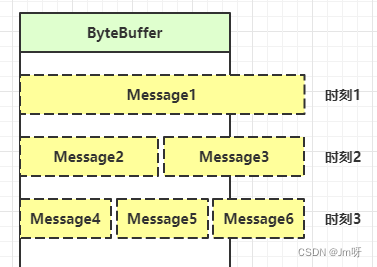
NIO基础 - 网络编程
non-blocking io 非阻塞 IO 1. 三大组件 1.1 Channel & Buffer channel 有一点类似于 stream,它就是读写数据的双向通道,可以从 channel 将数据读入 buffer,也可以将 buffer 的数据写入 channel,而之前的 stream 要么是输入…...

06.toRef 和 toRefs
学习要点: 1.toRef 和 toRefs 本节课我们来要了解一下 Vue3.x 中的 ref 两个周边 API 的用法; 一.toRef 和 toRefs 1. toRef 可以将源响应式对象上的 property 创建一个 ref 对象; const obj reactive({ name : Mr.Lee, age : 10…...
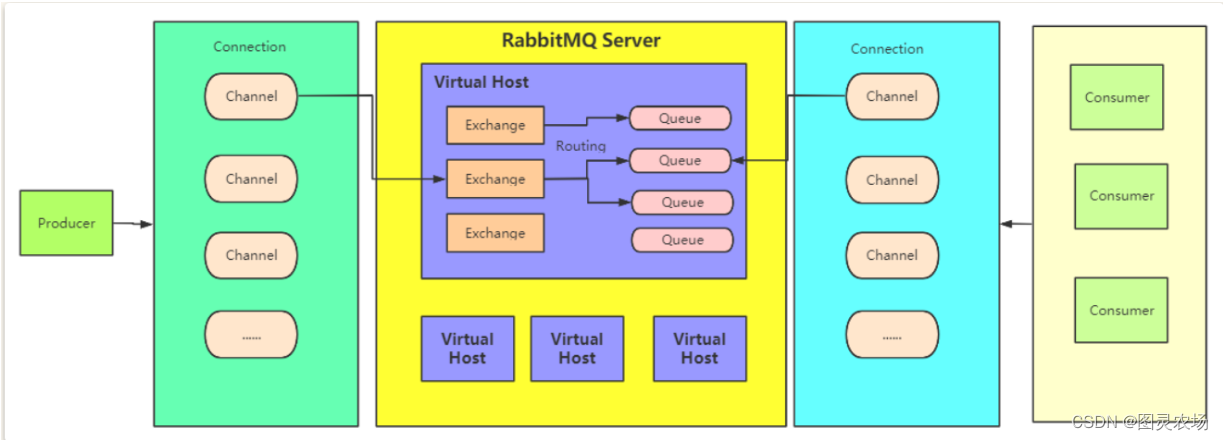
RabbitMq、Kafka、RocketMq整理
MQ的主要作用:异步提高性能、解耦提高扩展性、削峰。 一、常见中间件对比 Kafka、RocketMq和RabbitMq最大的区别就是:前两个是分布式存储。 1.1、ActiveMq 优点:1)完全支持jms规范的消息中间件 ,2)提供丰富的api, 3)多种集群构建模式。 缺点:)在高并发的场景下,性能可…...

Python多元线性回归预测模型实验完整版
多元线性回归预测模型 实验目的 通过多元线性回归预测模型,掌握预测模型的建立和应用方法,了解线性回归模型的基本原理 实验内容 多元线性回归预测模型 实验步骤和过程 (1)第一步:学习多元线性回归预测模型相关知识。 一元线性回归模型…...

C#基础 变量在内存中的存储空间
变量存储空间(内存中) // 1byte 8bit // 1KB 1024byte // 1MB 1024KB // 1GB 1024MB // 1TB 1024GB // 通过sizeof方法 可以获取变量类型所占的内存空间(单位:字节) 有…...

你最关心的4个零代码问题,ChatGPT 帮你解答了!
作为人工智能(AI)新型聊天机器人模型 ChatGPT,刚上线5天就突破100万用户,两个多月全球用户量破亿,不愧为业界最炙热的当红炸子鸡。 ChatGPT 是一种语言生成模型,由 OpenAI 开发和训练。它是基于 Transform…...

linux的环境变量
目录 一、自定义变量和环境变量的区别 二、自定义变量 三、环境变量 四、查看所有变量(自定义变量、环境变量) 五、记录环境变量到相关的系统文件 (1)为什么要这样做? (2)环境变量相关系统…...

openQA----基于openSUSE部署openQA
【原文链接】openQA----基于openSUSE部署openQA (1)下载 openqa-bootstrap 脚本并执行 cd /opt/ curl -s https://raw.githubusercontent.com/os-autoinst/openQA/master/script/openqa-bootstrap | bash -x(2)配置apache proxy…...
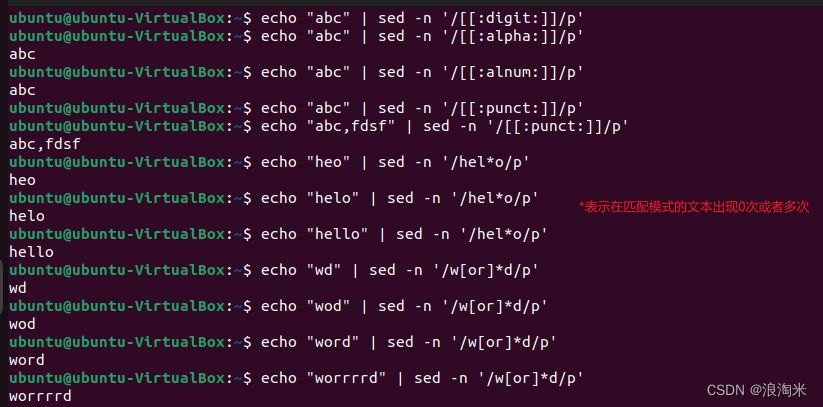
正则表达式基础一
BRE(basic regular expression):匹配数据流中的文本字符 普通文本匹配 特殊字符 正则表达式存在一些特殊字符,如需当成普通文本来匹配,必须加上转义,即反斜杠\,如下所示 .*[]^${}?|() 指定出现位置的字符 ^ 指定行首…...

Java中的内存泄露、内存溢出与栈溢出
内存泄露、内存溢出与栈溢出 1、概述2、内存泄漏、内存溢出和栈溢出2.1、内存泄漏2.2、内存溢出2.3、栈溢出 2、总结 1、概述 大家好,我是欧阳方超。本次就Java中几个相似而又不同的概念做一下介绍。内存泄漏、内存溢出和栈溢出都是与内存相关的问题,但…...

时序预测 | Matlab实现SSA-GRU、GRU麻雀算法优化门控循环单元时间序列预测(含优化前后对比)
时序预测 | Matlab实现SSA-GRU、GRU麻雀算法优化门控循环单元时间序列预测(含优化前后对比) 目录 时序预测 | Matlab实现SSA-GRU、GRU麻雀算法优化门控循环单元时间序列预测(含优化前后对比)预测效果基本介绍程序设计参考资料 预测效果 基本介绍 Matlab实现SSA-GRU、GRU麻雀算法…...

Java+springboot开发的医院HIS信息管理系统实现,系统部署于云端,支持多租户SaaS模式
一、项目技术框架 前端:AngularNginx 后台:JavaSpring,SpringBoot,SpringMVC,SpringSecurity,MyBatisPlus,等 数据库:MySQL MyCat 缓存:RedisJ2Cache 消息队列&…...

【前端面经】Vue-Vue中的 $nextTick 有什么作用?
Vue.js 是一个流行的 JavaScript 框架,它提供了许多实用的功能,其中之一就是 $nextTick 方法。 在 Vue.js 中, $nextTick 方法可以确保我们在更新 DOM 之后再去执行某些操作,从而避免由于 DOM 更新而导致的问题。这个方法非常实用…...
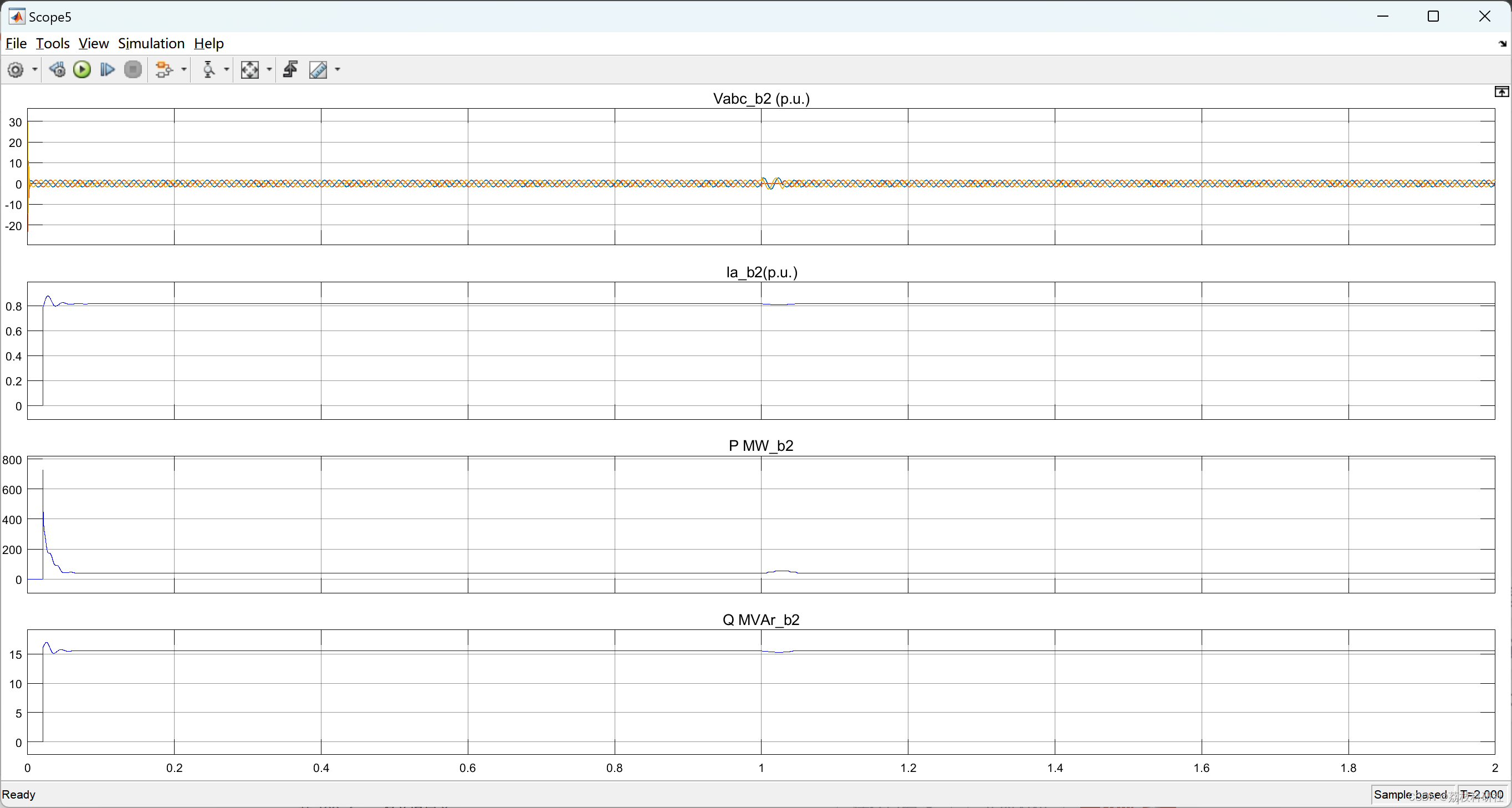
基于STATCOM的风力发电机稳定性问题仿真分析(Simulink)
💥💥💞💞欢迎来到本博客❤️❤️💥💥 🏆博主优势:🌞🌞🌞博客内容尽量做到思维缜密,逻辑清晰,为了方便读者。 ⛳️座右铭&a…...

如何写出高质量的代码
背景说明: 你是否曾经为自己写的代码而感到懊恼?你是否想过如何才能写出高质量代码?那就不要错过这个话题!在这里,我们可以讨论什么是高质量代码,如何写出高质量代码等问题。无论你是初学者还是资深开发人…...
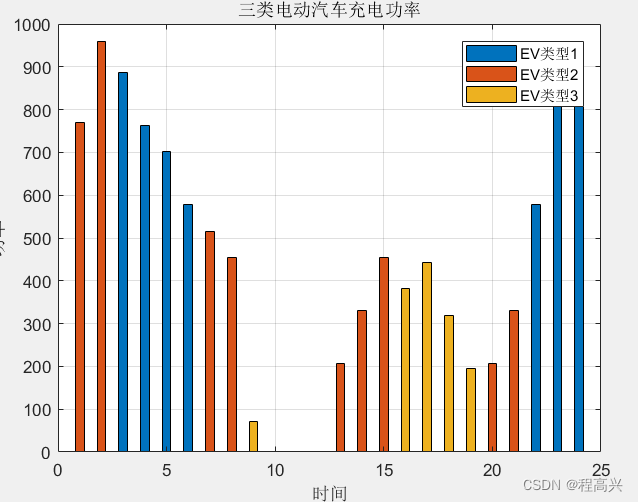
15.基于主从博弈的智能小区代理商定价策略及电动汽车充电管理
说明书 MATLAB代码:基于主从博弈的智能小区代理商定价策略及电动汽车充电管理 关键词:电动汽车 主从博弈 动态定价 智能小区 充放电优化 参考文档:《基于主从博弈的智能小区代理商定价策略及电动汽车充电管理》基本复现 仿真平台&#…...

ChatGPT实现多语种翻译
语言翻译 多语种翻译是 NLP 领域的经典话题,也是过去很多 AI 研究的热门领域。一般来说,我们认为主流语种的互译一定程度上属于传统 AI 已经能较好完成的任务。比如谷歌翻译所采用的的神经机器翻译(NMT, Neural Machine Translation)技术就一度让世人惊…...

volatile关键字原理的使用介绍和底层原理解析和使用实例
文章目录 volatile关键字原理的使用介绍和底层原理解析和使用实例1. volatile 关键字的作用2. volatile 的底层原理3. volatile 的使用案例4. volatile 的原子性问题5. 如何解决 volatile 的原子性问题6. volatile 的实现原理7. 小结8. volatile的最佳实践9. 案例:使用volatile…...

【软件下载】换新电脑记录下下载的软件时所需地址
1.idea https://www.jetbrains.com/zh-cn/idea/download/other.html 2.oracle官方(下载jdk时找的) https://www.oracle.com/ 3.jdk8 https://www.oracle.com/java/technologies/downloads/ 下拉找到jdk8 切换windows (需要注册个oracle账…...
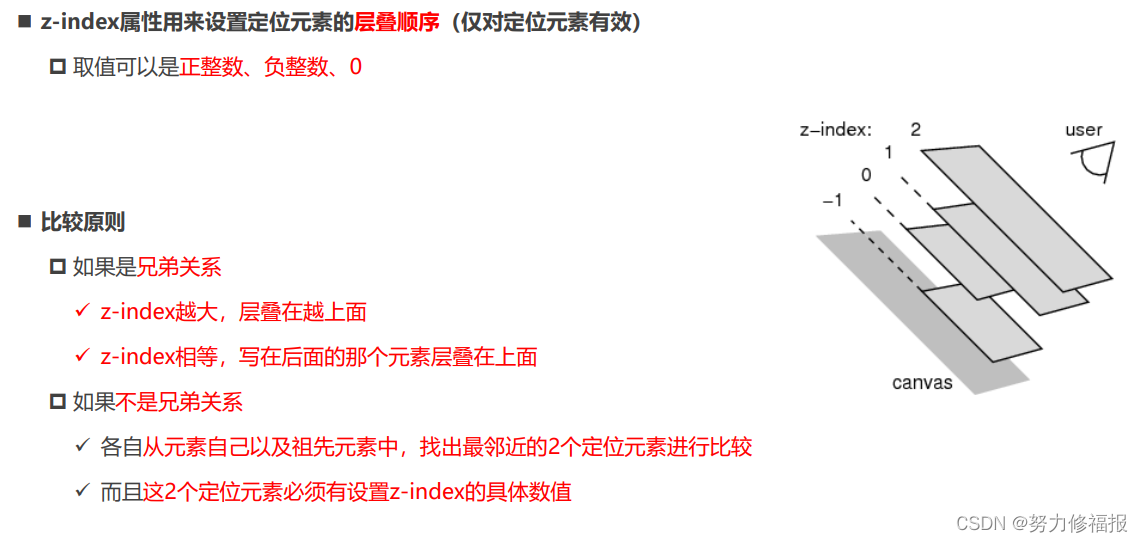
【10.HTML入门知识-CSS元素定位】
1 标准流(Normal Flow) 默认情况下,元素都是按照normal flow(标准流、常规流、正常流、文档流【document flow】)进行排布 从左到右、从上到下按顺序摆放好 默认情况下,互相之间不存在层叠现象 1.1…...

LeetCode_贪心算法_简单_455.分发饼干
目录 1.题目2.思路3.代码实现(Java) 1.题目 假设你是一位很棒的家长,想要给你的孩子们一些小饼干。但是,每个孩子最多只能给一块饼干。 对每个孩子 i,都有一个胃口值 g[i],这是能让孩子们满足胃口的饼干的…...

HashMap
目录 HashMap是什么? 为什么要使用HashMap? HashMap存储元素原理(put⽅法) 扰动函数 前置知识 异或运算 &运算 为什么使用扰动函数 实验验证扰动函数 常见问题 HashMap的默认长度是多少? HashMap是先扩…...
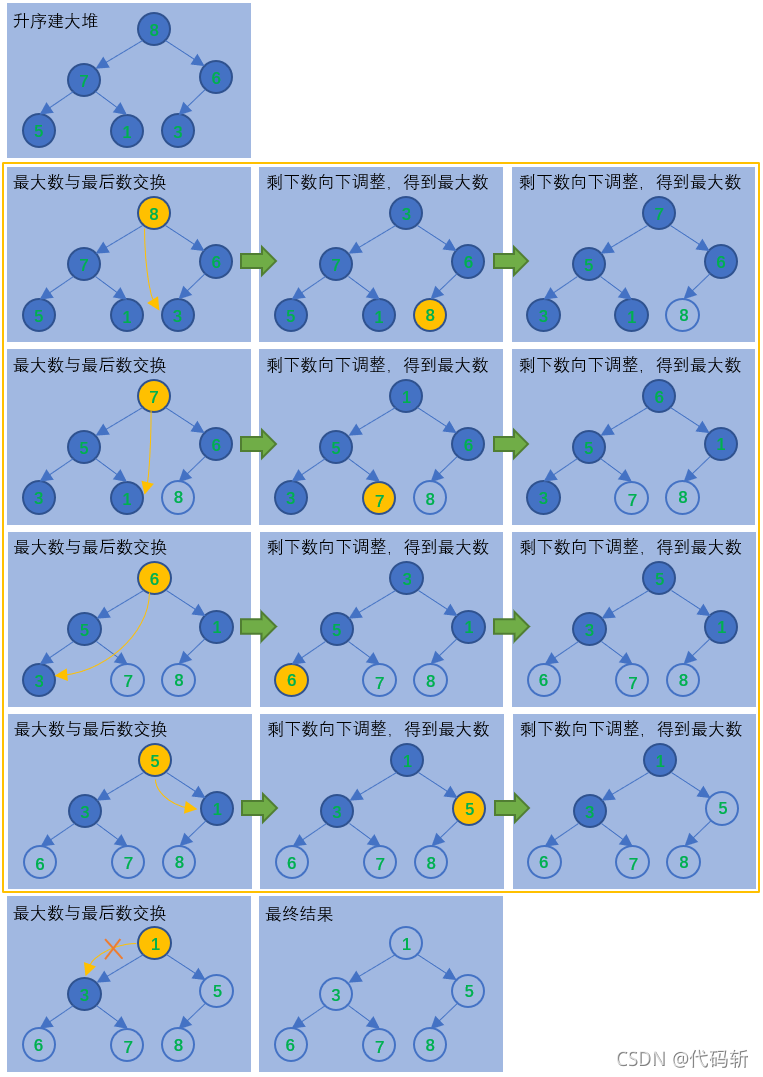
数据结构初阶 —— 树(堆)
目录 一,堆 堆的概念 向下调整法(数组) 向上调整法(数组) 堆的创建(建堆) 堆的实现 一,堆 堆的概念 如有个关键码的集合K{,,,...…...

一文看懂低代码,5分钟从入门到原理全搞定
全球低代码市场已经走过了近20年,中国低代码市场近5年经历了百花齐放的广泛探索阶段,更旺盛的市场需求逐步在被激发。现在,让我们按下暂停键,看看这些产品给我们呈现了低代码市场一幅怎样的百景图。 低代码平台简介 广义上的低代…...
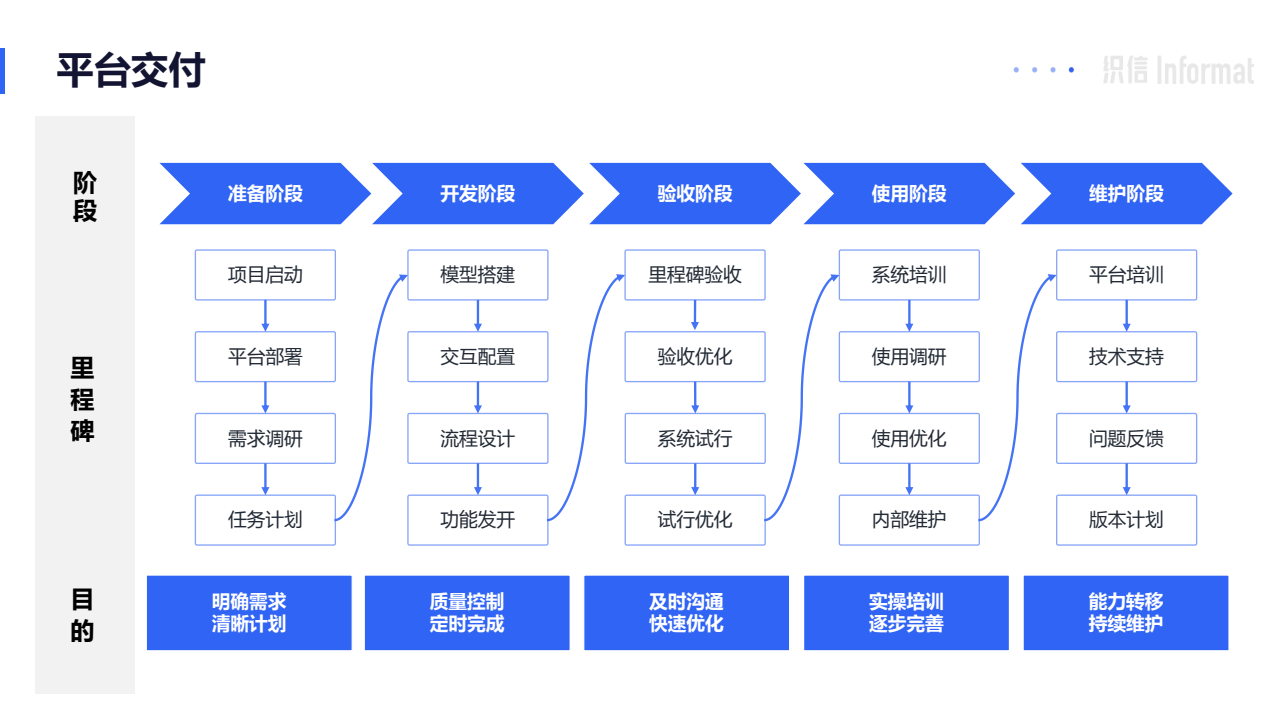
MetaERP系统主要干什么的,华为自研ERP的路子是否可以效仿?
近日,华为成功研发出自主可控的MetaERP系统,并完成了对旧有ERP系统的替换。该系统采用全栈自主可控技术,基于华为欧拉操作系统、GaussDB等根技术,采用云原生架构、元数据多租架构、实时智能技术等,提高业务效率&#x…...
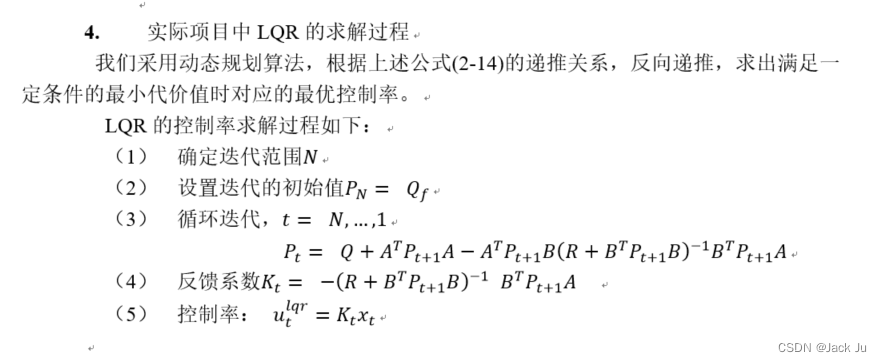
自动驾驶——离散LQR的黎卡提方程Riccati公式推导与LQR工程化
1.LQR Question Background 之前写过连续系统的黎卡提方程Riccati推导,但是考虑到实际工程落地使用的是离散系统,于是又进行了离散黎卡提方程Riccati的公式推导。 2.Proof of Riccati Equation Formula for Discrete Systems 工程化落地,就…...
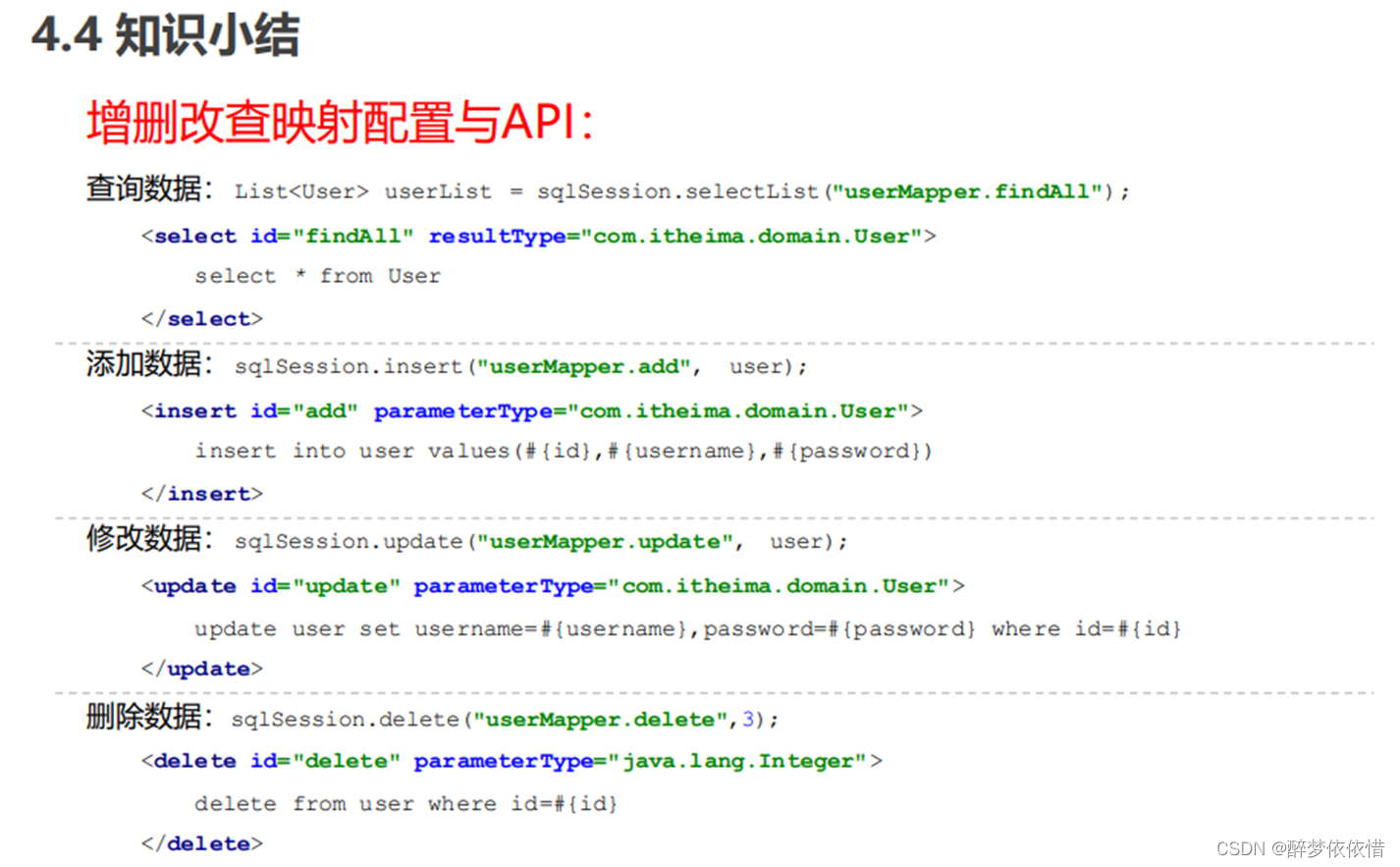
28.Mybatis的入门
目录 一、Mybatis的入门。 (1)Mybatis的简介。 (2)Mybatis的快速入门。 (2.1)快速入门。 (2.2)UserMapper.xml文件。 (2.3)sqlMapConfig.xml文件。 …...

Android Jetpack 从使用到源码深耕【ViewModel从实践到原理 】(三)
上文,我们通过简单的ViewModel使用源码入手,对其源码进行阅读,原理进行了简单总结,简单来说,ViewModel是通过Activity的onRetainNonConfigurationInstance 与 getLastNonConfigurationInstance的自动调用,实现了 ViewModel数据的存储和恢复,数据存储在ViewModelStore的m…...

什么性格的人适合报考环境科学类专业?高考选专业
环境科学类专业包括有:环境科学与工程,环境工程,环境科学,环境生态工程,环保设备工程,资源环境科学,水质科学与技术。 环境对于未来是一个极其重要的方向,需要学生具备一定的科学素…...

Python中的异常处理机制可以帮助程序员在程序运行过程中遇到错误时进行处理
Python中的异常处理机制可以帮助程序员在程序运行过程中遇到错误时进行处理,防止程序崩溃或出现不可预测的错误。 Python中的异常处理使用try-except语句。try语句块包含可能会出现异常的代码,而except语句块则定义了出现异常时应该执行的操作。下面是一…...
